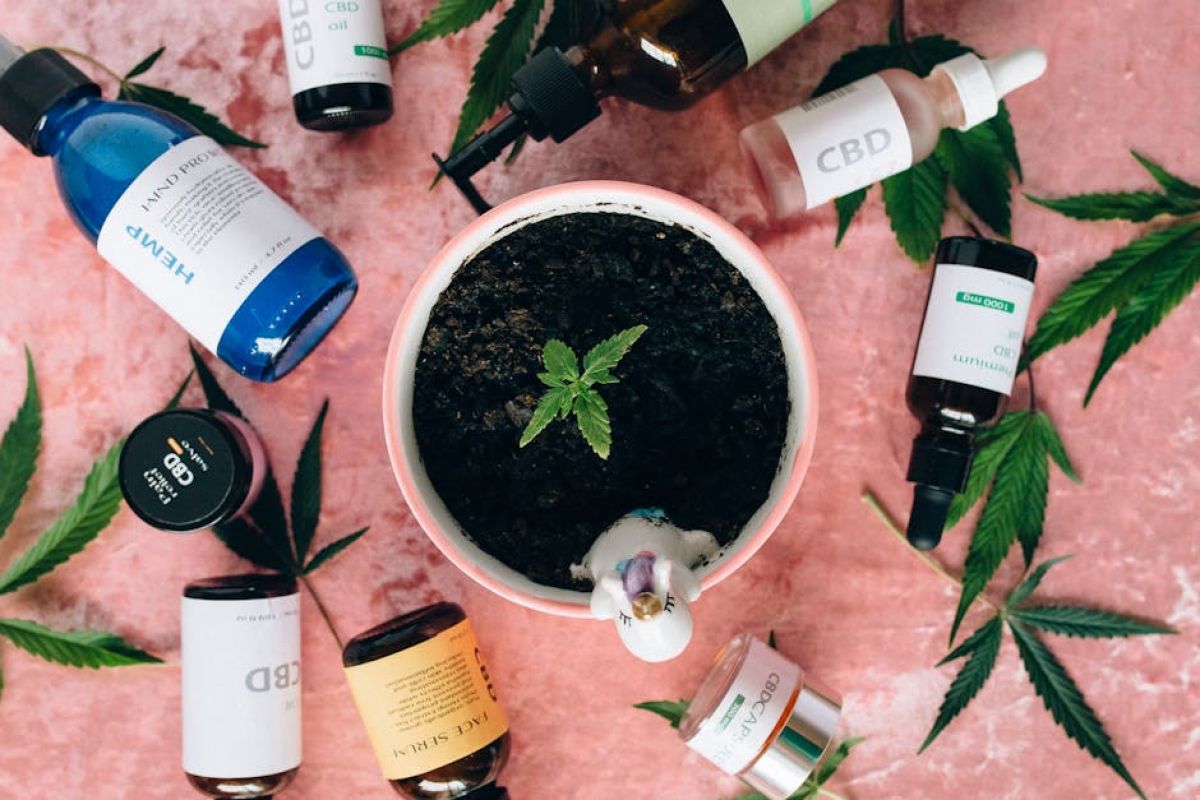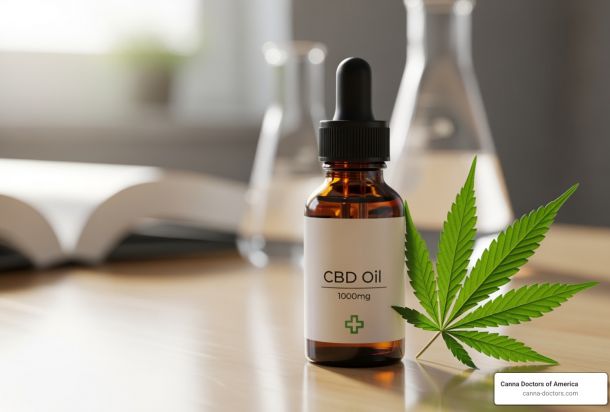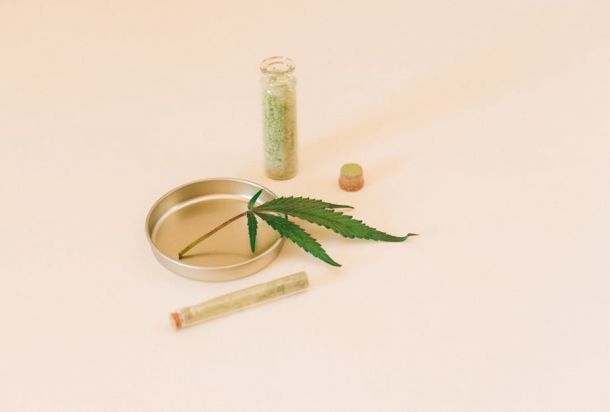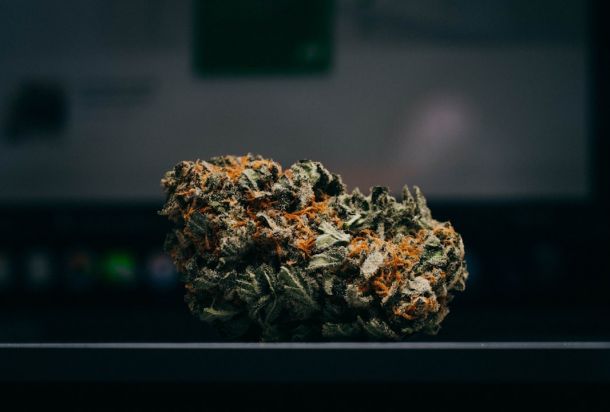Ratio-nal Thinking – How THC to CBD Ratios Can Boost Your Wellness

Understanding THC to CBD Ratios: The Key to Personalized Cannabis Medicine
THC to CBD ratio benefits depend on what you’re trying to achieve with cannabis. Here’s a quick guide to help you understand which ratio might work best for your needs:
| THC:CBD Ratio | Best For | Effects |
|---|---|---|
| 1:1 (Golden Ratio) | Pain, neuropathy | Balanced therapeutic effects with moderate psychoactivity |
| 10:1 or 20:1 (CBD dominant) | Anxiety, daytime use | Minimal psychoactivity with calming effects |
| 2:1 – 1:2 | Sleep, moderate pain | More pronounced relaxation with some psychoactivity |
| 1:10 or 1:20 (THC dominant) | Severe pain, experienced users | Strong psychoactive effects |
When it comes to cannabis medicine, understanding the relationship between THC and CBD isn’t just helpful—it’s essential for finding relief without unwanted side effects. These two primary cannabinoids work differently in your body, and the ratio between them can dramatically change your experience and therapeutic outcomes.
Why does this matter? Because the same cannabis plant that helps one person sleep might make another person anxious, depending on its cannabinoid profile. The right ratio gives you control over your wellness journey.
I’m Geoff Massey, Regional Director of Canna Doctors of America, and I’ve spent years helping patients understand THC to CBD ratio benefits to create personalized treatment plans that address their unique needs and sensitivities. My experience has shown that matching the right ratio to each condition is often the difference between cannabis being life-changing medicine or just another failed treatment.
THC and CBD 101: Why Two Molecules Matter
Think of THC and CBD as the dynamic duo of cannabis medicine – two molecules from the same plant that work in completely different ways in your body.
THC (tetrahydrocannabinol) is the life of the party – it’s what creates that famous “high” feeling when it binds directly to CB1 receptors in your brain. But there’s so much more to THC than just its mind-altering effects. It’s also a powerful ally for pain relief, can calm those waves of nausea, spark your appetite when it’s gone missing, relax tight muscles, and help you drift off to sleep when counting sheep just isn’t cutting it.
CBD (cannabidiol), on the other hand, is THC’s more mellow cousin – it doesn’t cause any intoxication at all. Working behind the scenes, CBD gently influences multiple systems in your body without directly binding to cannabinoid receptors. Its impressive resume includes fighting inflammation, calming anxiety, controlling seizures, protecting your brain cells, and even offering potential antipsychotic benefits.
How They Differ in the Body
Your body responds to these two compounds in fascinatingly different ways:
When THC enters your system, it fits like a key into the CB1 receptors in your brain – a direct and powerful connection that explains why effects come on quickly (sometimes within minutes when smoked or vaped). This accept with your brain’s receptors creates that euphoric feeling and altered perception that can last anywhere from 2-6 hours. You might notice your heart beating a bit faster or feel a little unsteady on your feet – all normal responses to THC’s enthusiastic greeting.
CBD takes a more subtle approach. Rather than binding directly with receptors, it gently influences both CB1 and CB2 receptors while also chatting with several other receptor systems in your body. This indirect conversation means CBD’s effects tend to build more gradually but often last longer (typically 4-8 hours). And here’s a neat trick – CBD can actually temper some of THC’s more intense effects, like a friend who makes sure you don’t get too carried away at the party.
As neurologist and cannabis researcher Dr. Ethan Russo puts it: “CBD is a very powerful anti-inflammatory and analgesic, but it works through different mechanisms than THC. When combined, they can produce effects that neither compound can achieve alone.”
Shared Synergy & The Entourage Effect
The real magic happens when these compounds work as a team – what scientists call the “entourage effect.” It’s like how a choir sounds more beautiful than a solo performer, no matter how talented that individual might be.
Cannabis isn’t just about THC and CBD – it’s a natural pharmacy containing:
Over 100 other cannabinoids that each bring something unique to the table
Aromatic terpenes that not only create distinctive smells but also have therapeutic properties of their own
Flavonoids that act as powerful antioxidants
Research in the British Journal of Pharmacology found that this botanical ensemble creates stronger healing effects than isolated compounds. For example, the terpene myrcene might improve THC’s ability to help you relax and sleep, while citrusy limonene could boost CBD’s mood-brightening qualities.
When we talk about THC to CBD ratio benefits, we’re really discussing how to orchestrate this natural symphony for your specific health needs. Finding the right balance between these compounds can mean the difference between unwanted side effects and life-changing relief.
Decoding Numbers: What the THC:CBD Ratio Actually Indicates
Ever glanced at a cannabis product label and wondered what those numbers like 1:1 or 20:1 actually mean? You’re not alone! These mysterious number pairs are actually your roadmap to understanding exactly what effects you might experience.
Think of THC:CBD ratios as a simple recipe. When you see something labeled as 1:1, it means you’re getting equal parts of both cannabinoids – like a perfectly balanced smoothie with equal parts fruit and yogurt. A 2:1 ratio gives you twice as much THC as CBD, while a 1:2 flips that proportion, offering twice as much CBD as THC.
Here’s where it gets important: these ratios only tell you the relationship between the two cannabinoids, not the actual amounts. A 1:1 tincture could contain 2mg of each cannabinoid or 20mg of each – and trust me, your experience would be dramatically different despite having the same ratio!
How these ratios come to be is fascinating too. Some cannabis products come from plants specifically bred to produce certain cannabinoid profiles, while others are carefully blended during processing to achieve the perfect balance. The extraction method can also influence the final ratio you experience.
For deeper scientific insights into how these cannabinoids work in your body, check out more info about cannabinoids.
Reading Product Labels Without Getting Lost
Cannabis labels can sometimes feel like you’re reading a foreign language, but I promise – with a few simple tips, you’ll be navigating them like a pro.
First, always look beyond just the ratio and find the actual milligram (mg) amounts. This tells you the true potency you’re getting. For example, that tincture labeled “1:1 CBD:THC” with 300mg total cannabinoids in a 30ml bottle? Each milliliter contains 5mg CBD and 5mg THC – information that’s far more useful for dosing accurately than just knowing it’s a 1:1 ratio.
Also pay attention to whether THC is listed first or second in the ratio (some products list CBD:THC instead of THC:CBD), and always verify the testing lab information to ensure what you’re getting matches what’s on the label.
THC to CBD Ratio Benefits Snapshot
The beauty of different ratios is that they can be matched to specific needs – this is where the true magic of personalized cannabis medicine shines. Let me walk you through how different ratios might benefit various conditions:
If you’re dealing with anxiety, inflammation, or seizures – or simply need to stay clear-headed during the day – high CBD ratios (like 10:1 or 20:1 CBD:THC) offer relief without significant psychoactivity. Many of my patients who were initially nervous about cannabis have found these ratios perfect for easing into treatment while remaining fully functional at work.
For chronic pain, neuropathy, or muscle spasms, balanced ratios (like 2:1, 1:1, or 1:2) often provide that sweet spot of therapeutic relief with manageable psychoactivity. The 1:1 ratio is often called the “golden ratio” because it harnesses the synergistic benefits of both cannabinoids while they simultaneously balance each other’s potential side effects.
When dealing with severe pain, nausea, or appetite loss, high THC ratios might be appropriate, especially for those with cannabis experience. These formulations deliver potent symptom relief alongside stronger psychoactive effects.
What’s fascinating is that research supports this approach. A 2018 study in the Journal of Pain Research found that chronic pain patients actually reported better outcomes with balanced THC:CBD formulations compared to THC-only preparations – scientific evidence of what we call the entourage effect.
For those interested in the science behind cannabinoid synergy, there’s some fascinating scientific research on cannabinoid synergy worth exploring.
The THC to CBD ratio benefits you experience will be unique to you – which is why at Canna Doctors of America, we take the time to understand your specific needs before recommending a particular ratio. Cannabis medicine isn’t one-size-fits-all – it’s about finding your perfect match.
How Different Ratios Feel: From 20:1 to 1:20
Have you ever wondered why one cannabis product makes you feel completely different from another? It all comes down to the ratio. Let me walk you through how different THC:CBD combinations actually feel in real life.
20:1 CBD:THC
This highly CBD-dominant ratio is perfect if you want relief without feeling “high.” Most people experience a gentle wave of calm and improved focus—like that peaceful feeling after a deep breath, but lasting for hours.
I remember Sarah, a 42-year-old teacher from Tampa, who told me: “The 20:1 tincture changed my life. I can take it before work and feel my anxiety melt away without any mental fog. For the first time in years, I’m not constantly on edge.”
10:1 CBD:THC
With a bit more THC in the mix, you’ll likely notice better relief from inflammation and mild pain while staying sharp and functional. Many of my patients report improved mood and a noticeable reduction in stress—perfect for daytime use when you need to stay productive.
4:1 CBD:THC
Now we’re entering the territory where you might feel mild psychoactive effects alongside stronger therapeutic benefits. This ratio shines for inflammatory conditions like arthritis or inflammatory bowel disease. You’ll get meaningful relief without significant impairment—though first-time users might want to try this at home initially.
2:1 CBD:THC or THC:CBD
These more balanced ratios deliver moderate psychoactivity with robust therapeutic effects. If pain is your primary concern, the 2:1 THC:CBD version offers stronger relief for moderate to severe conditions. If anxiety is your battle, the 2:1 CBD:THC ratio provides calming effects with just a touch of euphoria to lift your mood.
The 1:1 “Golden” Ratio – THC to CBD Ratio Benefits
There’s a reason the 1:1 ratio has earned its “golden ratio” nickname—it perfectly balances the therapeutic power of both cannabinoids while each offsets the other’s downsides.
The THC to CBD ratio benefits of this perfect balance include:
- Superior pain control that works even for stubborn conditions. Studies on Sativex (a pharmaceutical 1:1 spray) show significant pain reduction for multiple sclerosis and neuropathic pain patients.
- Fewer unwanted effects since the CBD helps counteract THC-induced anxiety or paranoia.
- Just-right experience that provides meaningful relief without overwhelming psychoactivity.
- Morning-to-night versatility with lower doses working well for daytime and higher doses perfect for evening.
Michael, a 58-year-old veteran from Clearwater dealing with neuropathic pain, shared his experience: “I tried high-THC products and they helped my pain but made me too foggy. CBD alone didn’t touch the pain. The 1:1 tincture gives me relief without taking me out of commission. It’s the sweet spot.”
Research backs this up too. A landmark clinical trial in the European Journal of Pain found that a 1:1 THC:CBD formula significantly reduced pain in rheumatoid arthritis patients while also improving sleep quality and morning stiffness.
High CBD Dominant (10:1 – 20:1): Calm Without the High
If you need symptom relief but want to stay completely clear-headed, high CBD ratios are your best friend. These formulations work wonders for:
Anxiety disorders – CBD appears to help calm anxious minds through its action on serotonin receptors, offering relief without sedation.
Seizure conditions – There’s strong evidence for CBD’s anticonvulsant properties (in fact, Epidiolex, a CBD-only pharmaceutical, has FDA approval for certain seizure disorders).
Daytime symptom management – When you absolutely need to remain sharp for work, driving, or childcare.
Cannabis-sensitive individuals – If you’ve had negative experiences with THC in the past, these high-CBD formulas provide a gentler introduction.
A 2018 review published in Neuropsychopharmacology confirmed CBD’s anxiety-reducing effects in both animal and human studies, making these ratios particularly valuable for stress management.
Balanced Leaning THC (2:1 – 1:2): Evening Relief & Sleep
When evening comes and you’re looking for deeper relief, ratios with more THC than CBD deliver stronger effects while still offering CBD’s moderating benefits. These formulations excel for:
Insomnia – THC’s natural sedating properties combined with CBD’s anxiety-reducing effects create the perfect sleep-promoting combination.
Severe or breakthrough pain – When pain breaks through your regular management approach, the higher THC content provides more potent relief.
Muscle spasticity – THC’s muscle-relaxant properties shine in these formulations, offering relief from tightness and cramping.
Evening relaxation – When you’re home for the night and impairment isn’t a concern, these ratios help you unwind completely.
In a recent patient study at a pain clinic, people using 2:1 THC:CBD products reported an average pain reduction of 30% compared to their baseline, with significantly improved sleep as a wonderful bonus benefit.
Choosing Your Perfect Ratio and Delivery Method
Finding your ideal THC:CBD ratio isn’t about following a strict formula—it’s more like finding your favorite recipe. What works wonderfully for your neighbor might leave you feeling uncomfortable, and that’s completely normal.
Your perfect ratio depends on several personal factors. First, consider what you’re trying to treat—anxiety responds differently than pain or insomnia. Your cannabis experience matters too; if you’re new to this world, starting with CBD-dominant products helps you avoid feeling overwhelmed. Some people are naturally more sensitive to THC’s effects (yes, it’s genetic!), and your daily responsibilities play a huge role—you’ll need different support for a workday versus a quiet evening at home.
“I always tell my patients to think about their cannabis journey like finding the perfect pair of shoes,” says Dr. Lisa Martinez, a cannabis clinician. “You might need to try on a few different pairs before finding what fits just right.”
The way you take your cannabis is just as important as the ratio you choose. Each delivery method offers a unique experience:
Tinctures and oils work within 15-45 minutes and last 4-6 hours, making them perfect for managing ongoing conditions like arthritis. The dropper lets you measure precise doses, and you can adjust as needed.
Vaporization delivers almost immediate relief (1-5 minutes) but wears off faster (2-4 hours). This makes vapes ideal when you need quick help with breakthrough pain or sudden anxiety.
Edibles take their time (30-120 minutes) but stick around longer (6+ hours), making them perfect allies for sleep issues or when you need all-day relief. Just remember—patience is essential with edibles!
Topicals work where you apply them without affecting your mind, usually within 15-45 minutes. They’re wonderful for targeting specific areas like a sore knee or wrist.
Step-by-Step Ratio Selection Guide
Finding your ideal ratio doesn’t have to be complicated. Here’s how to approach it:
Start by getting clear about what you’re treating. Pain, anxiety, and sleep issues each respond better to different ratios. If you’re new to cannabis, begin with a high-CBD ratio like 10:1 or higher—it’s like dipping your toes in the water before diving in.
Always check with your doctor about potential interactions with your current medications. Some combinations can be problematic, especially with blood thinners or psychiatric medications.
The golden rule of cannabis medicine is “start low and go slow.” Begin with a tiny dose (around 2.5mg of total cannabinoids for a 1:1 product) and gradually increase only after you understand how your body responds.
Keeping a simple journal helps tremendously—note your dose, how you felt, any side effects, and whether your symptoms improved. These personal notes often reveal patterns that help you fine-tune your approach.
Most importantly, be patient with yourself. Finding your perfect ratio might take some experimentation, and that’s completely normal. Your endocannabinoid system is as unique as your fingerprint.
Product Form Matters: Bioavailability & Onset
The way cannabinoids enter your body dramatically affects your experience. Each method offers different bioavailability—the percentage of cannabinoids that actually reach your bloodstream.
Sublingual delivery (under the tongue) offers 20-30% bioavailability and works within 15-45 minutes. The tiny blood vessels under your tongue absorb cannabinoids directly, bypassing your digestive system for more efficient relief.
Inhalation through vaporization provides the highest non-invasive bioavailability (30-60%) and the fastest onset (1-5 minutes). This rapid response makes it ideal when you need immediate relief, like during a pain flare-up.
Edibles and oral products offer only 5-20% bioavailability because they must pass through your digestive system and liver. However, during this process, THC converts to 11-hydroxy-THC, which actually creates stronger, longer-lasting effects. This explains why edibles can feel more potent even at similar doses.
Transdermal products like patches deliver cannabinoids directly through your skin into your bloodstream. They provide consistent, controlled release that can last for hours or even days, making them excellent for ongoing relief.
A fascinating study in the Journal of Pain found that patients using vaporized cannabis felt relief within minutes, while those using oral forms needed over an hour to experience similar benefits.
Safety, Side Effects & Interactions
While exploring THC to CBD ratio benefits, it’s important to understand potential side effects—most are mild, but being prepared helps ensure a positive experience.
THC commonly causes dry mouth and eyes (keep water handy!), temporarily increased heart rate, and some coordination changes. Some people may experience anxiety or paranoia, especially at higher doses or if they’re naturally sensitive.
CBD tends to have fewer side effects, though some people notice mild fatigue, changes in appetite, or occasional digestive upset. CBD can also interact with certain medications by affecting liver enzymes that process drugs.
Always remember these safety basics: Never drive or operate machinery when using THC products. Be especially cautious with edibles—their delayed onset has surprised many experienced users. Check for potential drug interactions, especially if you take blood thinners, seizure medications, or psychiatric drugs. And always store your products securely away from children and pets.
The good news? A comprehensive 2017 review found that CBD is remarkably well-tolerated even at high doses, with most side effects being temporary and mild.
THC to CBD Ratio Benefits for Beginners: Start Smart
If you’re new to cannabis medicine, a thoughtful approach helps ensure your first experiences are positive. THC to CBD ratio benefits are most accessible to beginners when following these guidelines:
Begin with high-CBD ratios (at least 10:1 CBD:THC) to minimize any unwanted psychoactive effects. Consider microdosing techniques, using just 1-2.5mg of total cannabinoids to gently introduce your body to these compounds.
Many experienced cannabis physicians recommend the “5mg rule”—don’t exceed 5mg of THC in your first few sessions. This simple guideline prevents many uncomfortable first experiences.
Choose products with consistent, measurable dosing like tinctures or precisely dosed edibles rather than methods where dose control is more challenging. Having a CBD-only product on hand is wise—CBD can help counteract uncomfortable THC effects if needed.
Try your products in a comfortable, familiar environment where you feel safe and relaxed. Allow plenty of time between doses (at least 2 hours for inhalation, 4+ hours for edibles) to fully understand how each dose affects you.
Frequently Asked Questions about THC:CBD Ratios
Does CBD always blunt THC’s high?
The relationship between CBD and THC isn’t as simple as an on/off switch for psychoactive effects. While many people assume CBD completely cancels out THC’s high, the reality is much more nuanced and fascinating.
At lower doses, CBD might actually improve some of THC’s beneficial effects, creating a more well-rounded experience. At higher doses, it tends to soften THC’s more intense effects like anxiety or racing thoughts, without eliminating the therapeutic benefits.
I’ve seen this with many patients who find that adding CBD doesn’t diminish their pain relief from THC—it often improves it while making the experience more comfortable. As Dr. James Nguyen of Canna Doctors of America puts it: “We often see that adding CBD doesn’t necessarily reduce the beneficial effects of THC—it often improves them while making the experience more tolerable, especially for those sensitive to THC’s psychoactivity.”
Think of CBD not as THC’s opponent, but as its dance partner—they move together, sometimes leading, sometimes following, creating something better than either could alone.
Which ratio is best for chronic pain?
When it comes to chronic pain, the 1:1 THC:CBD ratio is often our recommended starting point. This balanced approach provides meaningful pain relief while keeping unwanted psychoactive effects in check. But like any good medicine, the “best” ratio isn’t one-size-fits-all.
Your ideal pain-relieving ratio depends on several personal factors:
The type of pain matters tremendously—neuropathic pain (like diabetic neuropathy or shingles) often responds beautifully to 1:1 ratios, while inflammatory pain might benefit from CBD-leaning formulations. Pain severity plays a role too; more intense pain might require higher THC concentrations for breakthrough relief.
Time of day considerations are practical and important—many patients prefer higher CBD ratios during working hours and higher THC ratios for evening and sleep. And of course, your individual body chemistry means your response might be unique—some find better relief with 2:1 THC:CBD or 1:2 THC:CBD formulations.
The science backs this approach too. A widely-cited clinical trial in the Journal of Pain found that a 1:1 THC:CBD medication provided significant pain reduction for patients with peripheral neuropathic pain, with improvements that stayed consistent over months of treatment.
How do I convert percentage ratios to milligrams?
Understanding how to convert percentages to milligrams can transform how accurately you dose your cannabis medicine. Let me break this down into something practical you can use right away:
For flower, a simple rule of thumb is that 1% equals about 10mg per gram. So if you have cannabis flower labeled 15% THC and 5% CBD (a 3:1 ratio), each gram contains approximately 150mg THC and 50mg CBD. This helps you estimate how much active ingredient you’re getting when you use a specific amount.
With oils and tinctures, the math works similarly. If your 30ml bottle lists 20% CBD and 5% THC (a 4:1 ratio), that means each milliliter contains roughly 200mg CBD and 50mg THC. The entire bottle would contain about 6000mg CBD and 1500mg THC total.
Edibles typically make this easier by stating the exact milligram amounts per piece—like “5mg THC and 5mg CBD per gummy.”
Percentages tell you concentration by weight, while milligrams tell you the actual amount of THC to CBD ratio benefits you’re getting. Knowing both helps you dose more precisely and consistently.
Conclusion
Finding your sweet spot with cannabis medicine is a lot like finding the perfect recipe – it takes some experimentation, patience, and a bit of guidance. The THC to CBD ratio benefits we’ve explored throughout this article aren’t just theoretical – they’re life-changing tools that thousands of patients use every day to find relief without unwanted side effects.
Think of these ratios as your personalized medicine cabinet. Some days you might need that 1:1 “golden ratio” for balanced pain relief, while other times a CBD-dominant formula helps you stay clear-headed during a stressful workday. The beauty of understanding these ratios is that you gain control over your wellness journey.
At Canna Doctors of America, we see the power of personalized cannabis medicine every day. Our patients in Tampa, St. Petersburg, and Clearwater come to us with unique stories, sensitivities, and goals. What works beautifully for Maria’s arthritis might be completely different from what John needs for his anxiety – and that’s exactly why these ratios matter so much.
Finding your ideal ratio is more marathon than sprint. Start low, go slow, and keep notes about what works and what doesn’t. The journal you keep might reveal patterns you wouldn’t otherwise notice, like how that 2:1 CBD:THC tincture helps your pain but only when you take it with food.
The science of cannabinoid medicine continues to evolve, with researchers uncovering new insights about how these remarkable plant compounds work together. What we know for certain is that the “entourage effect” – that synergy between cannabinoids and terpenes – often delivers benefits that isolated compounds simply can’t match.
If you’re just beginning your cannabis medicine journey, don’t feel overwhelmed. Our physicians are experienced guides who can help you steer these options based on your specific health needs. We offer same-day approval for medical marijuana cards and take the time to develop treatment plans that consider your whole health picture – not just your symptoms.
The right cannabis ratio can be the difference between “I tried cannabis once and it wasn’t for me” and “I finally found something that actually helps.” With patience and the right guidance, you can harness these powerful plant compounds in a way that truly works for your unique situation.
For more detailed information about ratio products and how they might benefit your specific condition, visit our information page about ratio products. Your journey to better wellness through optimized cannabinoid ratios isn’t ending with this article – it’s just beginning.










